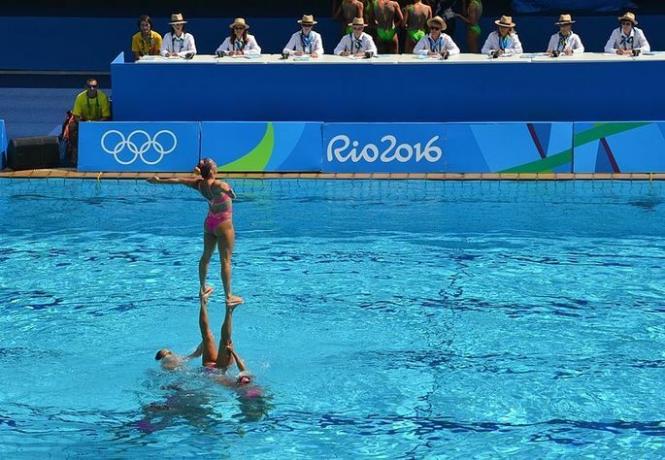O futsal, also called indoor soccer, is a team sport similar to field soccer, but it has its peculiarities.
Although they are similar, futsal has specific rules and differs, for example, by the number of players and the dimensions of the game space.

In Brazil, futsal has had great representation in recent decades. Alongside football, it is the sport most practiced in the country by men and women.
Origin of Futsal
Futsal emerged in the 1930s in Uruguay. The person in charge was the physical education teacher Juan Carlos Ceriani Gravier of the ACM (Associação Cristã de Moços).

Juan Carlos Ceriani Gravier, creator of futsal
In the beginning it was called Indoor Football (in the literal translation it means “football inside”).
History of Futsal in Brazil
Soon after being invented, futsal arrived in Brazil in 1935. Here, it came to be called indoor soccer.
Even at the beginning we could find 7 players in each team (14 in total). Later and with the new formulations, this number was reduced to 10 in total.
We should also emphasize the weight of the ball, which at first was lighter. With the kicks, for example, it was very easy for her to leave the court. Therefore, through observations, its weight was being increased.
Currently, futsal ball is heavier than field soccer.
Its circumference is between 62 and 64 centimeters and a weight ranging from 400 to 440 grams.
After the consolidation of the rules of this sport in the late 1950s, it quickly spread throughout the country.
In 1954, the first federation of this sport was founded in Brazil, called the “Metropolitan Federation of Indoor Football”. Currently, it is called “Indoor Football Federation of the State of Rio de Janeiro”.
In the following years, other states in Brazil also followed suit and founded their futsal-related federations.
It was only in the 50s that federations were founded in São Paulo, Minas Gerais, Santa Catarina, Rio Grande do Sul, Paraná, Bahia, Ceará, Sergipe and Rio Grande do Norte.
As time went by, every state in the country had a futsal federation and team.
In 1971, the “International Indoor Football Federation” (Fifusa) was founded in São Paulo. On the occasion, representatives from Brazil, Argentina, Paraguay, Uruguay, Bolivia, Peru and Portugal were present.
The Brazilian Futsal Confederation operates through the CBF and is affiliated to FIFA. In addition to FIFA, the international futsal championships are organized by the World Futsal Association (AMF) based in the city of Asunción, Paraguay.
Currently there are several futsal championships in Brazil and around the world. The FIFA Futsal World Cup and the AMF Indoor Football World Cup deserve to be highlighted.
Brazil has one of the strongest futsal teams and has been champion a few times. In Europe, the teams of Italy, Spain and Russia stand out.
Although relatively new, futsal is considered one of the fastest growing sports in the world.
Futsal Fundamentals
The goals of this sport, just like in football, is to score goals. Thus, the winning team is the one that manages to score the most goals during the match.
Total playing time is 40 minutes. In other words, there are two 20-minute periods with a 10-minute interval between them.
Futsal brings together various movements from kicks, ball passes, dribbles, headers, etc.
In addition to the players present on the court and in reserve, each team has a coach. In addition, there are two referees: the auxiliary and the main. The timekeeper is responsible for controlling the playing time.
Futsal Rules
In futsal you should never put your hand on the ball. The only player who can is the goalkeeper who uses a glove to defend the opposing team's goal.
Like field football, if a player commits a foul, he may be shown a yellow (warning) or red (expulsion) card. Three yellow cards equal one red.
Fouls can be committed when the player touches the ball, when there are disagreements between players and referees, or when there is physical or verbal violence. The judge who will decide the seriousness of the offense and the card that will be given.
It is noteworthy that in futsal there is no concept of offside, as in field football. In turn, free kicks are similar to field football: corner kicks, goal kicks, throw-ins and corners.
Charges are made within 4 seconds and must be charged with your foot.
players
Futsal has two teams of 5 players each. It is worth noting that of these 5, each team has a goalkeeper, responsible for defending the entry of balls.
In addition to the goalkeeper, the so-called fixed players are responsible for the defense. This is equivalent to the defender in field football. The pivot or striker, on the other hand, has the objective of scoring goals.
In futsal there is no limit to player substitutions and they can occur at any time during the game.
Block

Futsal court
Futsal is played on a rectangular court. It is between 24 and 42 meters long, by 15 to 22 meters wide, varying according to the category. Note that courts can be covered or uncovered.
Read too:
- Types of sport: invasion, brand, precision, combat, net and wall
- invasion sports
- Origin of Football
- Soccer
- Volleyball
- Basketball
- Handball
- Baseball
- Swimming
- Athletics



